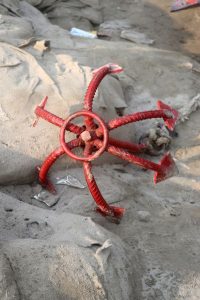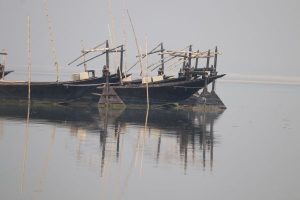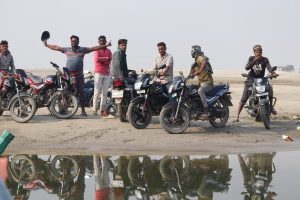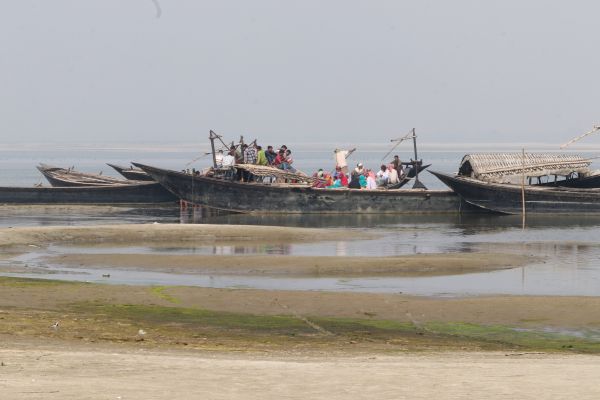Rajshahi is just an overnight place, there is little of interest, except for the archaeological Varendra museum, the oldest museum in the country, which is closed. A tourist map with ‘Old Architecture’ leads to an area where there are old, derelict houses, but little in terms of architecture.
In the evening we walk around T-Badh, a promontory at the edge of the Padma River. This where the Rajshahis gather for social interaction, obviously. It is a great place, with food stands, tables and parasols, and a range of boats for hire, for a sundowner cruise. Without G&T, admittedly – we haven’t been able to get any alcoholic drinks, yet. As it is already pretty late, we decide to do the cruise the next morning, and limit ourselves to having selfies taken with members of the crowd; clearly, there are few foreigners traveling in Bangladesh, and each time we get somewhere, lots of people insist on taking our photographs, with or without asking; the highlight is a selfie with one of us.
The cruise
The cruise is a delight. We get into an open wooden boat, big enough for three times our small group of six, and first go along the river bank, observing daily life of the people living here. Anywhere else prime real estate, you would think, with unobstructed river view, but here mostly poor people, who so once in a while, when the water level rises, even may have to evacuate. We then cross to an island, not much more than a sand bank in the middle of the river, from where the main ferry departs, to destinations further downstream. Smaller boats feed the ferry by crossing the five or ten minutes from Rajshahi. Pretty cumbersome, but what I understand is that the syndicate of small ferry skippers ensures that the bigger ferry doesn’t depart from Rajshahi directly. Right! This system ensures jobs not only for the skippers, but also for a army of motor taxis, who transport travellers from the landing of one ferry to the departure of the other. But efficient? No, not really.
next: to Sylhet






























